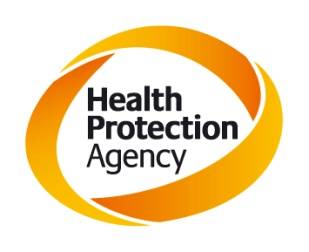Scale of UK exposure to X-rays revealed
Date published: 04 January 2011

Health Protection Agency's logo
Greater use of X-rays over the last ten years, including a 140 per cent increase in CT examinations, has raised the annual radiation dose the UK public receives, HPA research has found.
Radiation scientists at the Agency have estimated that about 46 million medical and dental X-ray examinations were carried out across the UK in 2008, an increase of 10 per cent since 1997. About two-thirds, 67 per cent, of the procedures were carried out in NHS hospitals while 26 per cent were performed by dentists.
According to figures analysed by the HPA’s specialists, X-rays in the area covered by the North West Strategic Health Authority in 2008 made up 14.65 per cent of all such procedures in England.
The new HPA study reveals that the average annual radiation dose to each member of the public from all diagnostic X-rays has increased from 0.33 millisieverts (mSv) in 1997, the last time a detailed frequency survey was completed, to 0.4 mSv. Most of the increase is due to the growth in the number of higher dose CT examinations. Medical X-rays remain the largest single artificial source of radiation exposure for the UK population. The average radiation dose from all sources of ionising radiation remains about 2.7mSv per person year and medical x-rays contribute 15 per cent of this total.
Dr John Cooper, Director of the HPA’s Centre for Radiation, Chemical and Environmental Hazards, said: “Despite the increased use of diagnostic X-rays in medicine in the UK, the average dose to the population is still considerably lower than in comparable countries. This is because in the UK we carry out fewer X-ray examinations per head of population and because radiology departments are well managed by healthcare professionals. Well framed regulations and guidance exist to maximise the clinical benefit and protect the public and workers. It is worth noting that internationally our average annual diagnostic X-ray dose is low. In the USA, for example, people are exposed to five times more radiation from these procedures every year.”
The survey also reveals that;
- CT scanning now accounts for around 68 per cent of the dose to the UK public from all X-ray procedures. About 1.4 million CT scans were performed in 1997 and 3.4 million in 2008 – a rise of 140 per cent. Around 20,000 of these CT scans were performed on asymptomatic individuals as part of self-initiated health assessment.
- The NHS Breast Screening Programme accounted for 2.03 million X-ray examinations in 2008, an increase of 45 per cent since 1997 when 1.4 million examinations were carried out. This increase is due to widening of the age range for screening to cover women aged 50-70, instead of those aged 50-64.
- Dentists in the NHS and private practice carried out about 12 million diagnostic X-ray examinations in 2008, although their contribution to the UK radiation dose remains negligible since they are low dose procedures.
- About 1.2 million X-ray examinations were taken in independent hospitals in 2008, a rise of 40 per cent since 1997.
Dr Cooper added: “Medical radiology is by far the largest man made source of exposure to ionising radiation – which makes it a key area when it comes to radiation protection and identifying the areas where effort should be made to reduce unnecessary radiation doses to the public.
“This report highlights the steady rise over the past 30 years in the frequency of X-ray examinations in the UK and the resulting increasing average dose to the population, relative to a slower rise in the size of the population. We have previously drawn attention to the expanding use of CT scanning as an increasingly important source of exposure to ionising radiation for the UK public, often replacing conventional X-ray examinations. This report confirms that trend. It is essential that we keep monitoring radiology practice in this way in support of patient safety.”
Do you have a story for us?
Let us know by emailing news@rochdaleonline.co.uk
All contact will be treated in confidence.
Most Viewed News Stories
- 1Royton haulage firm fined after Rochdale dad went to work and didn’t come home
- 2Six men arrested in Rochdale child exploitation investigation
- 3Newhey's Char Steakhouse and Bank Chamber close with immediate effect
- 4Suspended council candidate was ‘politically naive’ for appearing in George Galloway video, leader...
- 5Rochdale church to host Camerados public living room
To contact the Rochdale Online news desk, email news@rochdaleonline.co.uk or visit our news submission page.
To get the latest news on your desktop or mobile, follow Rochdale Online on Twitter and Facebook.


